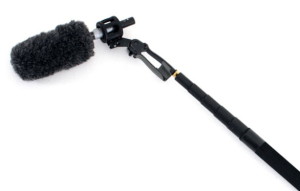The benefits of Shooting On Super 16mm
 Photo credit: rokkie.tv
Photo credit: rokkie.tv
The trend: Super 16mm film
An artist has their favourite painting style. A writer has their favourite genre, a musician has their favourite beat, etc. When you devote your life to the artistic form, you find what works for you and what doesn’t. Since art is all about interpreting what you see, feel and hear and then making it your own, each person’s style is as unique as a fingerprint. Those behind the camera have their own favourite styles too, from different lenses, to focuses to poses that make each of their photos and videos unique. One of the ways the filmmakers leave their touch on the world is through what camera they choose to use. Each choice creates a different mood and atmosphere, whether the viewer is aware of it or not. A hot and impressive style right now is actually a blast to the past: the Super 16mm film.
Some photographers say that you can never get the feeling that old film cameras can give you, especially if you’re looking for the grainy and slightly blurred features when shooting people-themed video. Those who have worked with film all their lives find that switching to digital can never give you that same feeling. We could spend all day debating whether that point is true or not, but the point of this is to focus on the Super 16mm film camera. This is a film camera that is able to give the same feeling and ambiance that you’re looking for, making it perfect for those film makers that are looking for a pure experience.
Most movies are shot digitally so that the content can be edited, cut, switched, modified, etc. It’s a modern world that is all about using the first several takes to make sure that the perfect one is created from them. With shooting with a digital camera, the final product comes from manipulation. When shooting with film cameras, however, such as the Super 16mm, there’s more authenticity to it. You can’t simply splice and dice the film the same way you can with the digital format. You have to get it right the first time so that the editing is minimal.
With a digital camera, the focus is on the crisp picture, the perfect edits, and getting the right combination of takes to make sure that you can get the perfect cone after patching them all together perfectly. With a film camera, the focus is on getting the right take from start to finish. The audience notices the brilliant acting and the realistic focus that is a bit grainy to give an honest touch to the acting. The focus remains on the story being told, not the special effects of digital filming.
When you’re looking at genres, the fast paced and action filled thrillers tend to go for the high end digital cameras. They need the crystal clear picture to go along with the special effects that make those movies so popular. Fo those slower paced dramas that centre around human evolution and character depth, the Super 16mm is the best way to go. It allows the audience to see through the camera’s eye in a literal sense: you are focusing on the characters and the stories instead of seeing the production behind it. The camera is transparent so that you can enjoy the struggles and triumphs of the characters, only when the final credits roll do you remember that you were watching a movie, and not part of the story itself.
Using the Super 16mm film camera allows for a more fulfilling human experience at the movies so that everyone gets a chance to experience an alternate reality, one where they feel changed when the story ends and you have to exit the theatre. Digital cameras can be as high tech as they want, but they’ll never take the place of the soulful filming that traditional film cameras have. We are in the best part of the world where we get to experience both kinds and enjoy each genre to its fullest extent.
Academy Award nominated cinematographer Ed Lachman, his work on Todd Haynes’ new film “Carol,” starring Cate Blanchett and Rooney Mara.

